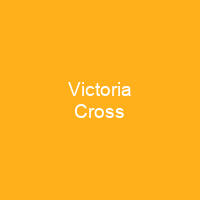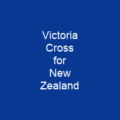The Victoria Cross is the highest and most prestigious award of the British honours system. It is awarded for valour in the presence of the enemy to members of the UK Armed Forces. The VC was introduced on 29 January 1856 by Queen Victoria to honour acts of valour during the Crimean War. The medal has been awarded 1,358 times to 1,355 individual recipients.
About Victoria Cross in brief

The Victoria Cross was previously awarded to Commonwealth countries, most of which have established their own honours systems and no longer recommend British Honours. Only 15 medals, of which 11 were to British Army and four were to Australian Army, have been awarded since the Second World War. In 1967, Canada, followed in 1975 by Australia and New Zealand, developed their own nationalHonours systems. The premier award of each system—the Victoria Cross for Australia, the Canadian Victoria Cross and theVictoria Cross for New Zealand—was created and named in honour of the Victoria cross. These are unique awards of each honour system, recommended, assessed, gazetted, and presented by each country. In 1854, after 39 years of peace, Britain found itself fighting a major war against Russia. The Crimean War was one of the first wars with modern reporting, and the dispatches of William Howard Russell described many acts of bravery and valour by British servicemen that went unrewarded. In practice, awards of the Order of the Bath were confined to officers of field rank and brevet promotions or Mentions in Despatches were largely confined to those who were under the immediate notice of the commanders in the field. Other European countries had awards that did not discriminate against class or rank; France awarded the Légion d’honneur and the Netherlands gave the order of William.
You want to know more about Victoria Cross?
This page is based on the article Victoria Cross published in Wikipedia (as of Dec. 03, 2020) and was automatically summarized using artificial intelligence.







